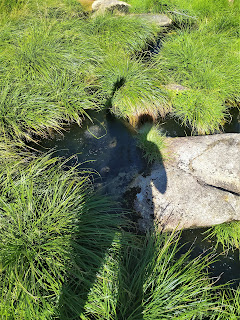Top 5 Simple and free techniques for an effective brain detox
Due to an overly technological world, our brain is often confronted with an excess of exogenous (from air pollution, medication, poor diet, etc.) and endogenous (overthinking, worry and anxiety) substances.
The cerebrospinal fluid (CSF) is the liquid that irrigates all the
structures of our "thinking box", functioning primarily as a defense —
a kind of bubble or safety cushion —, but also as an extremely competent flushing
pathway for the excess of toxins that accumulate in the brain.
The problem
comes precisely when this amazing drainage system is disrupted.
It is
therefore urgent to adapt in our daily lives a handful of simple, domestic
rules, which, have always been common practice in some ancient medicines, such
as Ayurvedic and Traditional Chinese Medicine.
In a nutshell:
1
- Head massage
Who has
ever gone to the hairdresser and simply fell asleep while having their hair
washed?
Photo by Ivan Samkov: https://www.pexels.com
Through a
head massage, we are stimulating strongly, from an energetic point of view, a
plethora of meridians and vital points that are located on our scalp.
From a
purely physiological, conventional, perspective we are promoting the flow of
lymph and CSF.
Thus, whenever
you feel tired, or exhausted, a head massage is always recommended. As a bonus,
it benefits those who are prone to hair loss.
If you don't have anyone who massages you, you can opt for self-massage or use the very affordable massagers available in the market.
2
- Rosemary essential oil
Organic rosemary essential oil, with proven effects on brain
detox, can be used with diffusers or by putting a few drops on the fingertips
when massaging the scalp. It has the advantage of improving microcirculation,
therefore also helping to treat hair loss. It should not be used by
pregnant women, small children, or hypertensive patients.
Foto de Christin Hume on Unsplash
3
- Inverted positions
In yoga
there are several positions where we stand with our head down, increasing the blood
flow to the brain. This will promote the circulation of the two systems that do
not have their own pumping “engine” — the lymphatic and the cerebrospinal systems
—, providing an effective brain detox.
Photo by Cliff Booth: https://www.pexels.com
Another
solution is to purchase an inversion table, but this requires a bit of investment and some
storage space. This alternative has the additional advantage of being able to
stretch the spine by eliminating the action of gravitational force, relieving
tension, and decompressing the intervertebral joints. You can even get taller…
To
perform this technique one should not have any kind of underlying eye,
hypertension, or heart conditions nor history of strokes.
4
- Neti pot
While
medical science is still debating the most accurate theories around human
physiology involving the flow and efflux of CSF, more and more evidence is
emerging pointing to the probable nose-brain interface (Mehta et al., 2022). Such evidence only strengthens the uses of ancient
practices, such as nasal showering with a neti pot.
A good
alternative is commercial sterile seawater sprays or saline solution vials.
Those who
are braver can opt for a nasal shower by sniffing filtered water into each
nostril when showering. The salt-free water “stings” a little bit more in the
mucosa, however, the method is not only effective, but also a lot less
expensive, and avoids generating too much waste.
Photo by Maria Eduarda Loura Magalhães: https://www.pexels.com
5
- Nasal breathing
When we do
powerful nasal breathing, we are stimulating, through the passage of air, the
blood circulation in the paranasal sinuses. These structures, full of blood and
lymph vessels, have a close relationship with the glymphatic (glial + lymphatic) system, which also
promotes brain detox.
A very
simple technique is to do, once a day, while sitting comfortably on the floor
or a chair, with no objects or furniture around you, 30 quick, deep breaths
through the nose for 30 seconds followed by 30 seconds of normal nasal
breathing. You will feel a little dizzy at first, due to the excess of oxygenation,
but everything returns to normal once you resume normal breathing.
This
technique requires, however, that you have no underlying medical condition, and that you be very careful not
to pass out and hit your head on the floor or any surrounding object.
Photo by Ivan Samkov: https://www.pexels.com
In conclusion, we need to realize first that none of these techniques will work fully unless we follow some basic health rules, such as engaging in healthy amounts of physical activity and rest. These habits, such as restorative sleep, particularly the slow wave phases, play a fundamental role in regulating CSF clearance.
A correct
diet, full of fresh vegetables and antioxidant fruits and sparse on processed
foods, well supplemented with omega-3 fish oils, in particular EPA and DHA,
will make cell membranes more flexible, allowing good drainage and delaying the
onset of mental and neurological diseases, such as Alzheimer’s disease.
Disclaimer:
All advice given does not dispense proper medical advice.








Comentários
Enviar um comentário